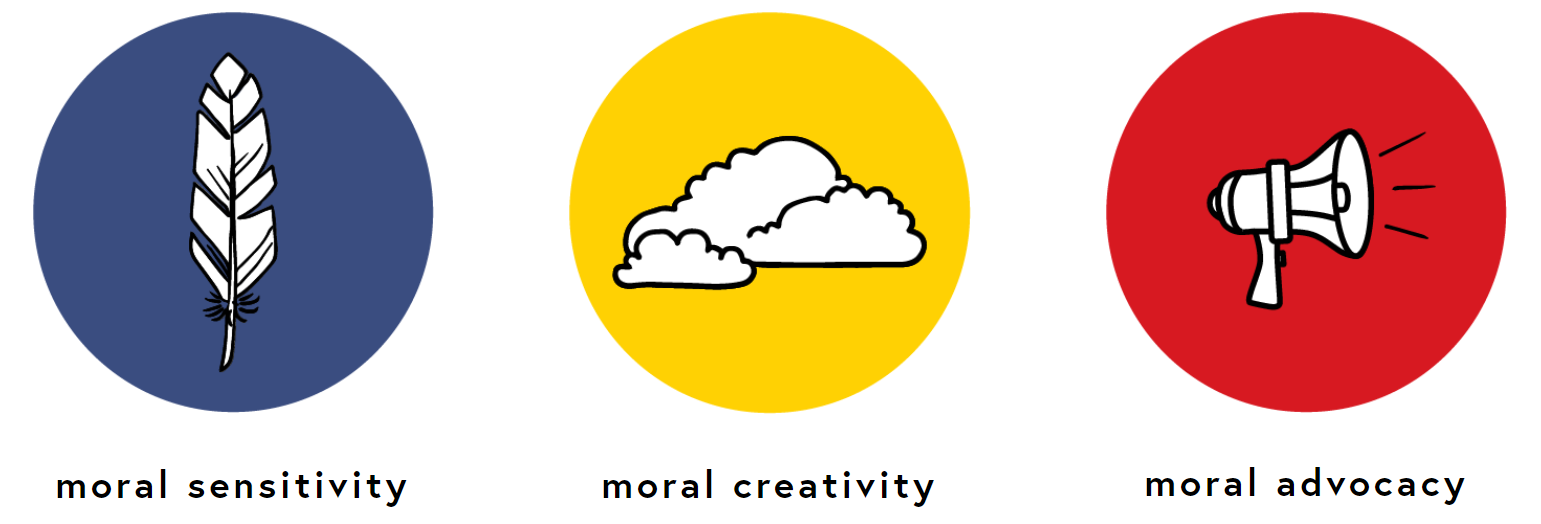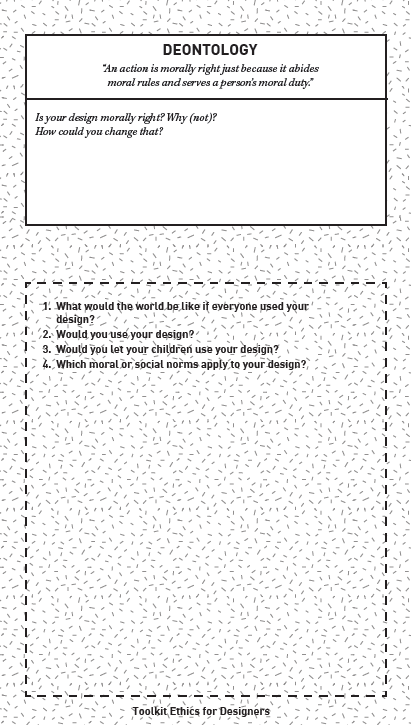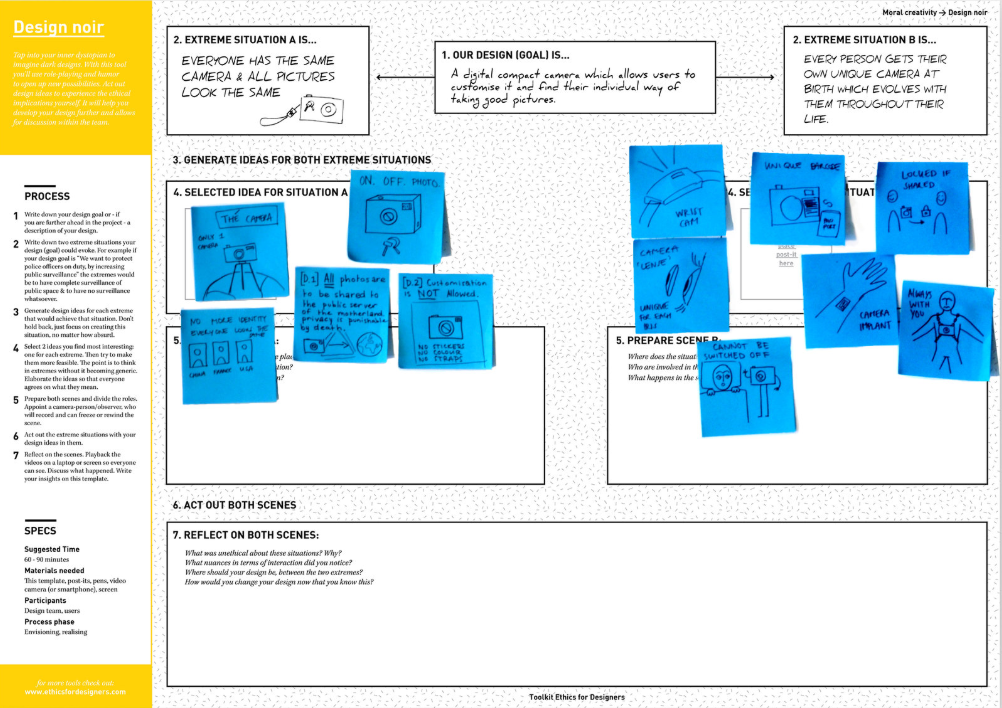We already know ethics is important.
The question is: how can you approach ethics when there are no guidelines or frameworks for it inside our companies, or nobody else is interested but you?
While the past post When is Design Good? covered general ideas about ethics and the problems faced in our industry, this article is focused on practical advice to work towards more ethical outcomes, whatever it is you do.
Poster for an AIGA lecture on design and ethics designed for Milton Glaser's class.
What is the criteria to evaluate ethical work?
One of the key problems in design is that we don't know how validate the ethical behaviour of our products and services as much as we understand shape, function and technology.
Jet Gispen, UX designer and design researcher, created a template-based toolkit named Ethics for Designers to develop ethical skills which you can download for free.
Main ethical skills the Ethics for Designers toolkit seeks to develop.
I want to highlight the Normative Design Scheme toolbox as it covers basic knowledge of normative ethics (the study of ethical action) and promotes brainstorming according to its common theories:
Besides these fundamental questions you can also find dystopian exercises like Design Noir that uses role-playing and humor to image the extreme scenarios of what your design could be.
Design Noir Template example - Ethics for Designers (2017)
How to convince clients to apply ethics:
You want to do the right thing but you feel there’s a limit to your influence.
Even though you feed the greatest ideas to the company if the team running the business doesn't operate there is not much you can do to succeed in making the business more invested in humanity and ethics.
Then how can you convince your clients or your boss to make efforts for a better world?
I assisted to a conference with Anne Quito, design reporter from Quartz, where she spoke about tackling ethical responsibilities and in the Q&A she shared two "hacks" to get clients on board: [2]
Hack #1: Quote good values / things their competitors are doing. Nobody wants to stay behind.
Hack #2: Just don't use the word ethics.
Ethics are not another box to tick on a document or a brake pedal to innovation but quite the contrary. Values can fuel cutting edge design and ethics is a necessary aspect to every job that we do.
Since we don't learn these things in design school you are welcome to share this post with a friend who cares and please comment below if you have any additional advice.
References
(1) Gispen, J. (2017) Ethics for Designers. Retrieved August 20, 2018 from: https://www.ethicsfordesigners.com/
(2) Quito, A. (2018) Design Does Forum. Q&A. Barcelona, Spain.











